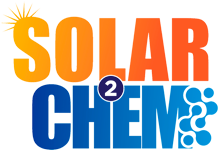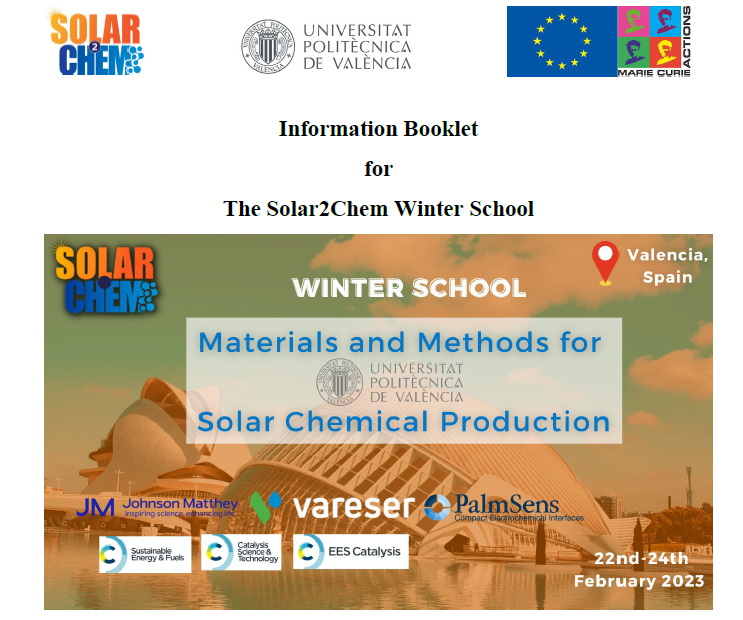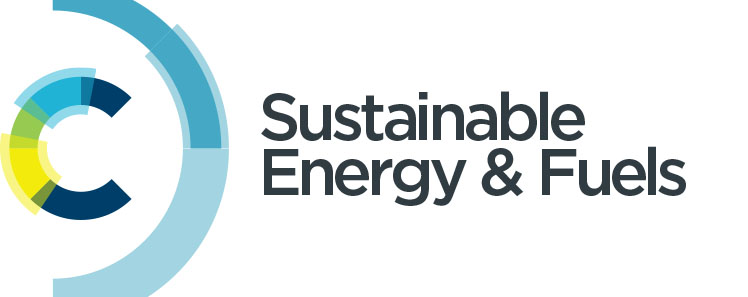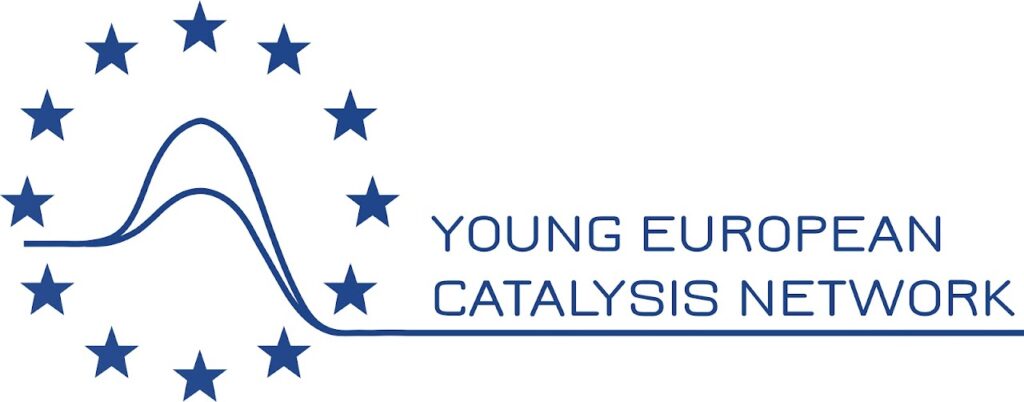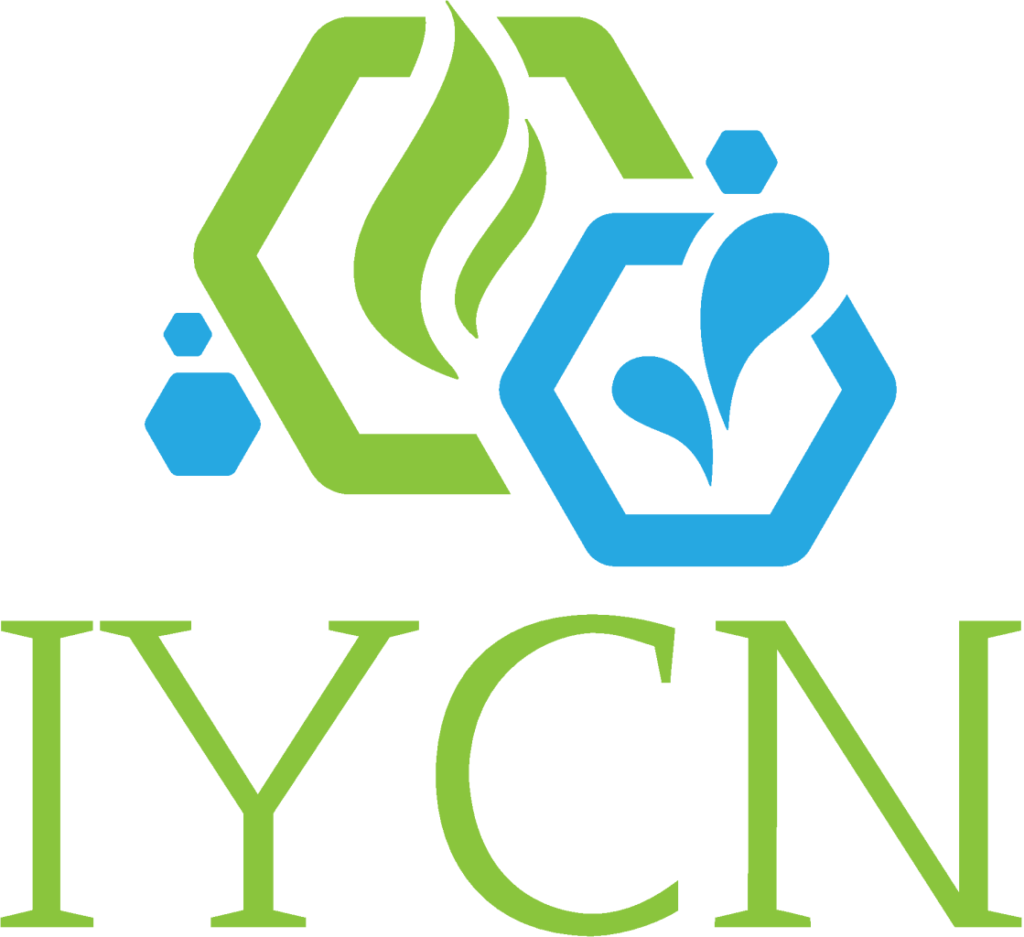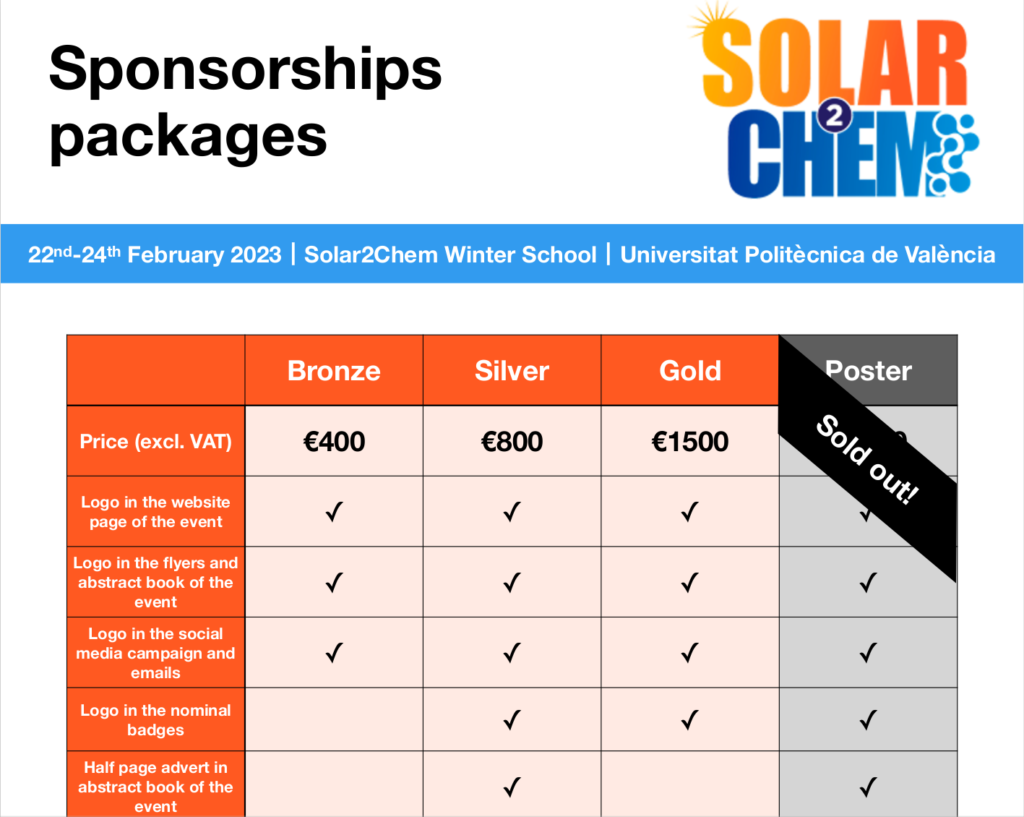The Solar2Chem Winter School “Materials and Methods for Solar Chemical Production” took place at the Universitat Politècnica de València (UPV) from the 22nd to the 24th of February 2023. The event had 80 attendees between early-stage and post-doctoral researchers who learnt the new trends of research about solar fuels production, interacted among each other during the networking activities, presented their research at the poster sessions and much more! A summary of the event can be found below.
The Winter School was opened by Hermenegildo García, full professor at Instituto de Tecnología Química (ITQ) of UPV, who discussed about photothermal catalysis for CO2 and N2 hydrogenation. Fatwa Abdi from the Helmholtz-Zentrum Berlin für Materialien und Energie introduced the research of his group about complex metal oxide photoelectrodes for solar fuels and chemical production followed by Ana Primo Arnau from UPV who gave a presentation about Mxenes as photocatalysts for water splitting. In the afternoon, the attendees visited the facilities of the laboratories of ITQ. The last talk of the day was given by Paul Collier, external programs manager at Johnson Matthey, who presented the possible career paths for researchers in industry and opened the poster session in which 48 projects were presented by the attendees of the school.
The second day was opened by Markus Antonietti, director of Max Planck Institute of Colloids and Interfaces, who illustrated the work of his group on new modifications of Carbon nitrides and their use in artificial photosynthesis and single atom support. The presentations of Elena Mas Marzá and Francisco Fabregat-Santiago, both from Institute of Advanced Materials (INAM) at Universitat Jaume I, about (photo)electrochemical processes beyond water splitting and CO2 reduction and spectroscopy techniques for the characterization of photoelectrochemical systems and the one of Laia Francàs Forcada from Universitat Autònoma de Barcelona about nanoparticles as catalysts for light driven reactions were followed by a roundtable mainly focused on the impact of artificial intelligence in research and development sector. Emilio Palomares from Institut Català d’Investigació Química (ICIQ) then showed the research of his group about molecular solar cells moving from dyes to hybrid semiconductors. In the afternoon Jon Ferrier, Deputy Editor of EES Catalysis at Royal Society of Chemistry, described how to navigate the publishing process with the Royal Society of Chemistry and opened the second day of poster session, which was dedicated to the competition to award the best four projects presented at the school with prizes from the Royal Society of Chemistry and Johnson Matthey.
The last day of the school started with a presentation from Salvador Eslava from Imperial College of London about engineering photoelectrochemical and photocatalytic materials for solar fuels. Kevin Sivula from École polytechnique fédérale de Lausanne then presented the achievements of his group in the development of organic semiconductors bulk heterojunctions for solar-driven water splitting. Carlos Martí-Gastaldo from Instituto de Ciencia Molecular in Universidad de Valencia proceeded with his presentation about homo- and heterometallic titanium-organic frameworks and finally Antonio Franconetti from Centro de Investigación Cooperativa en Biociencias concluded the event with his presentation about computational approaches to unravel the structure, interactions and catalytic features in metal-free materials.
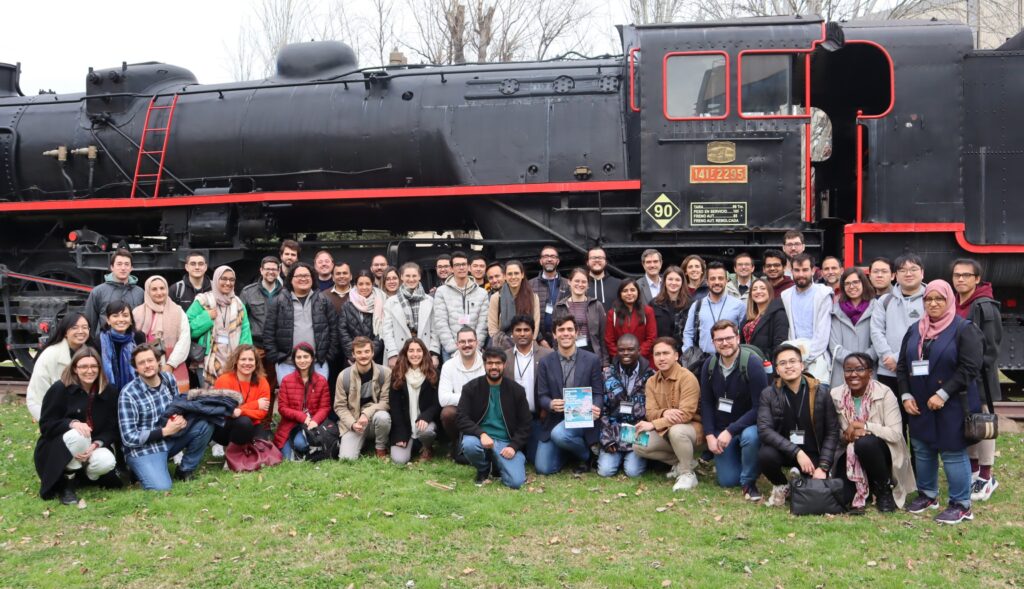
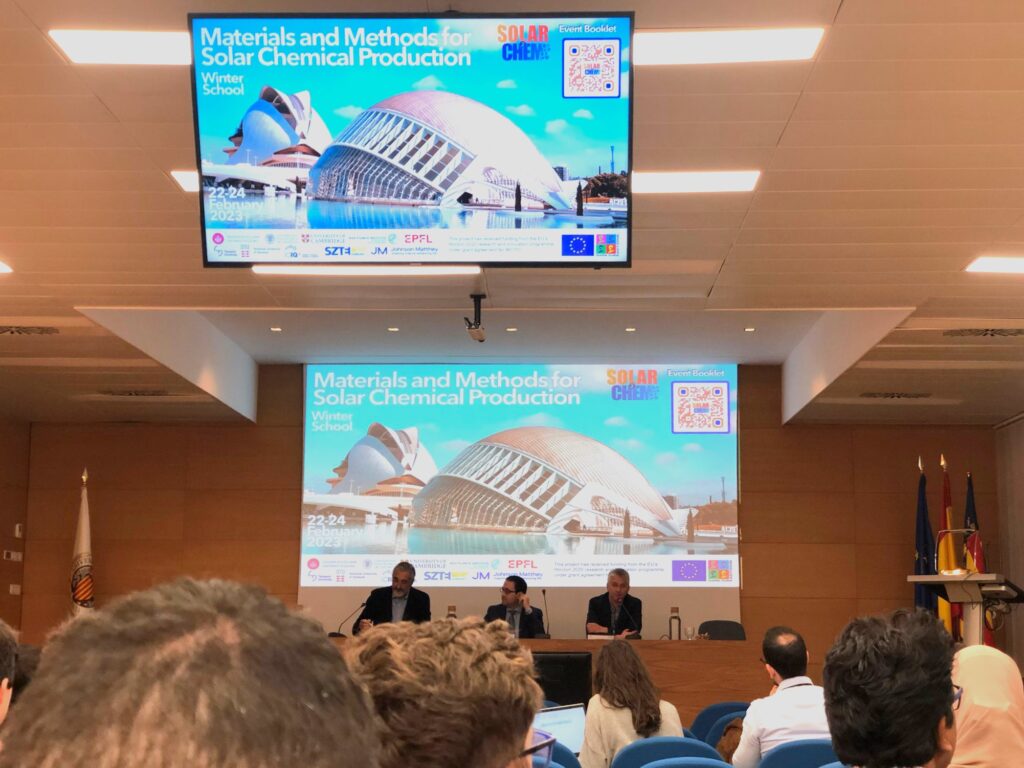
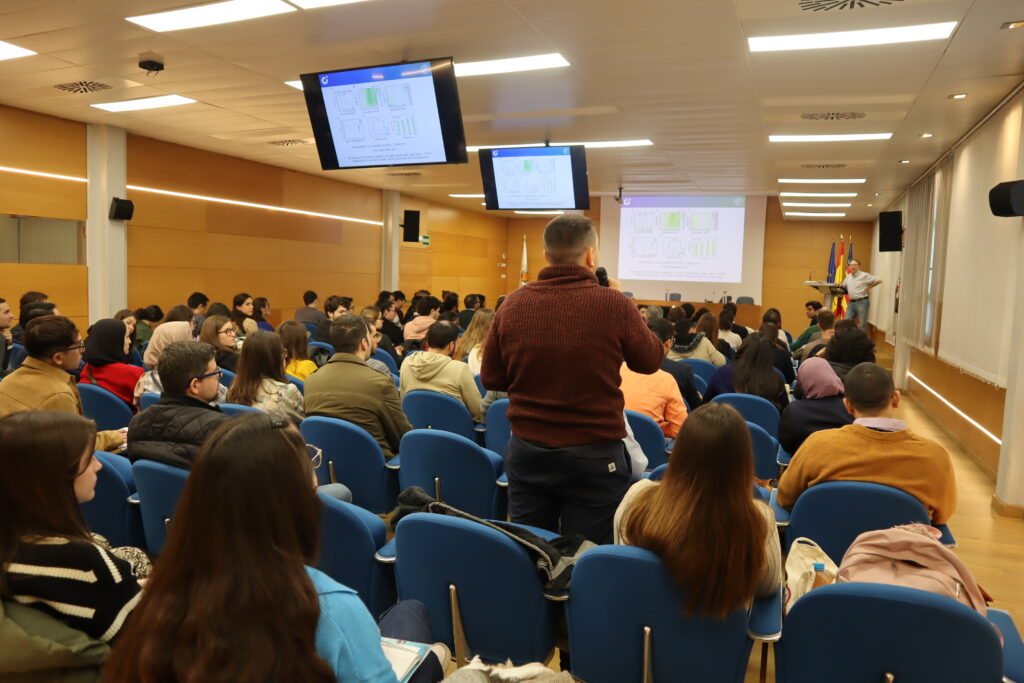
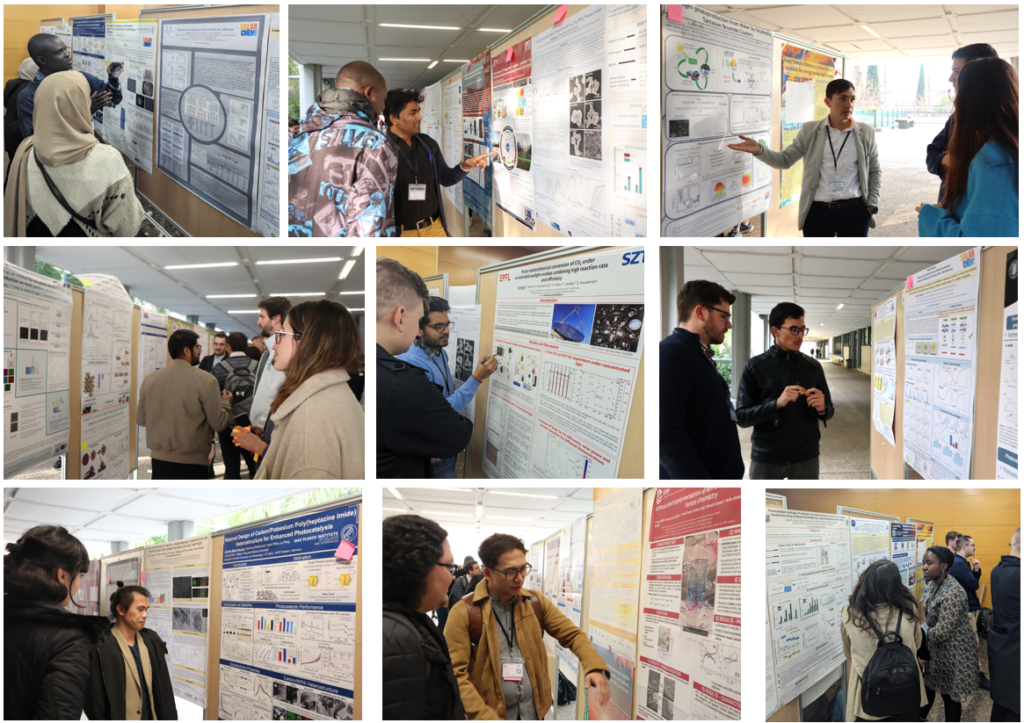
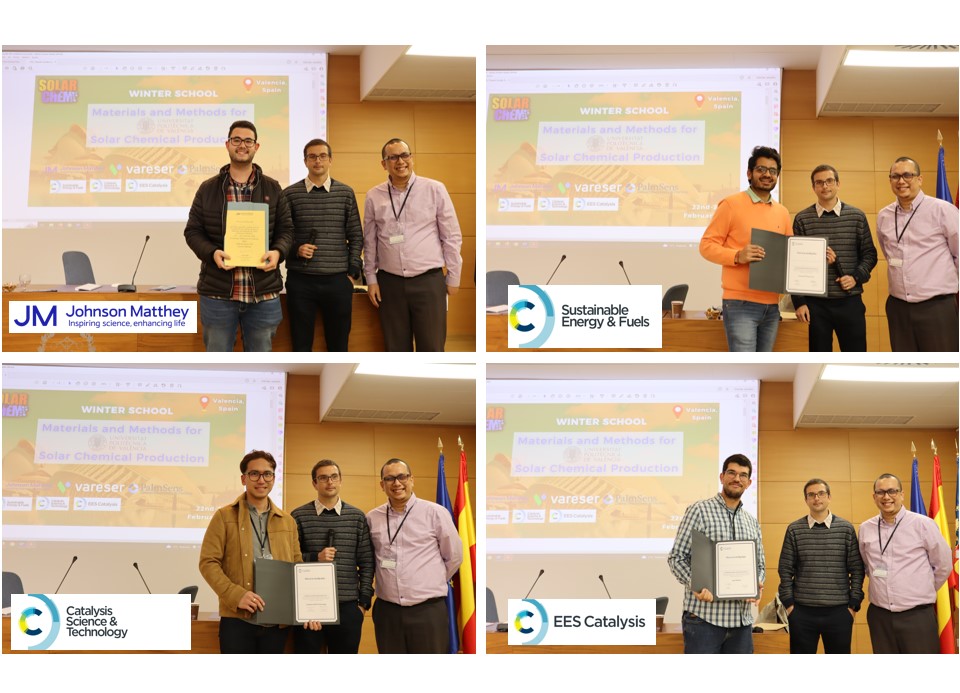
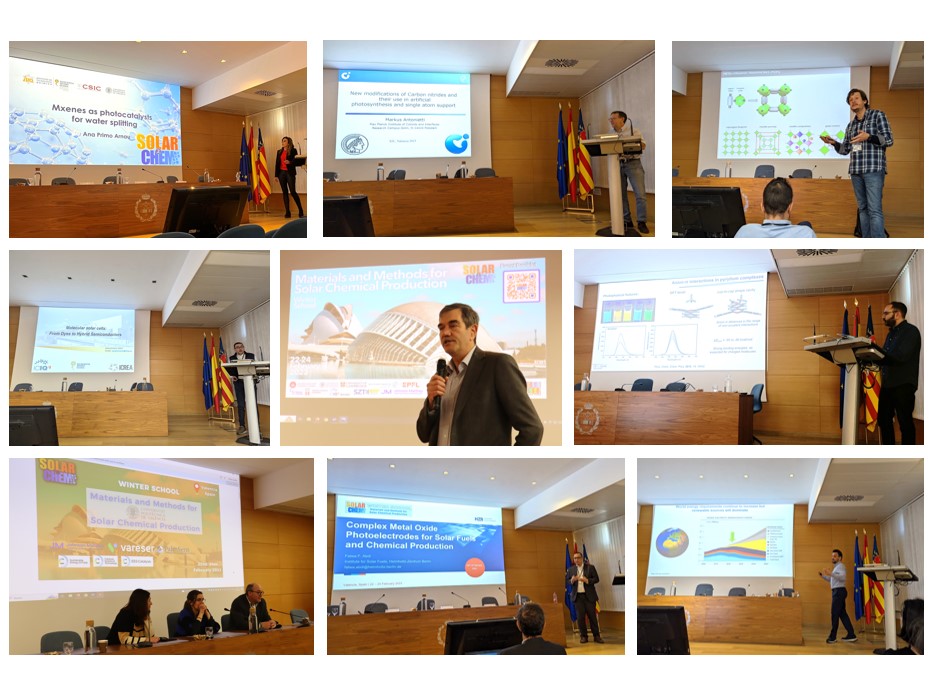
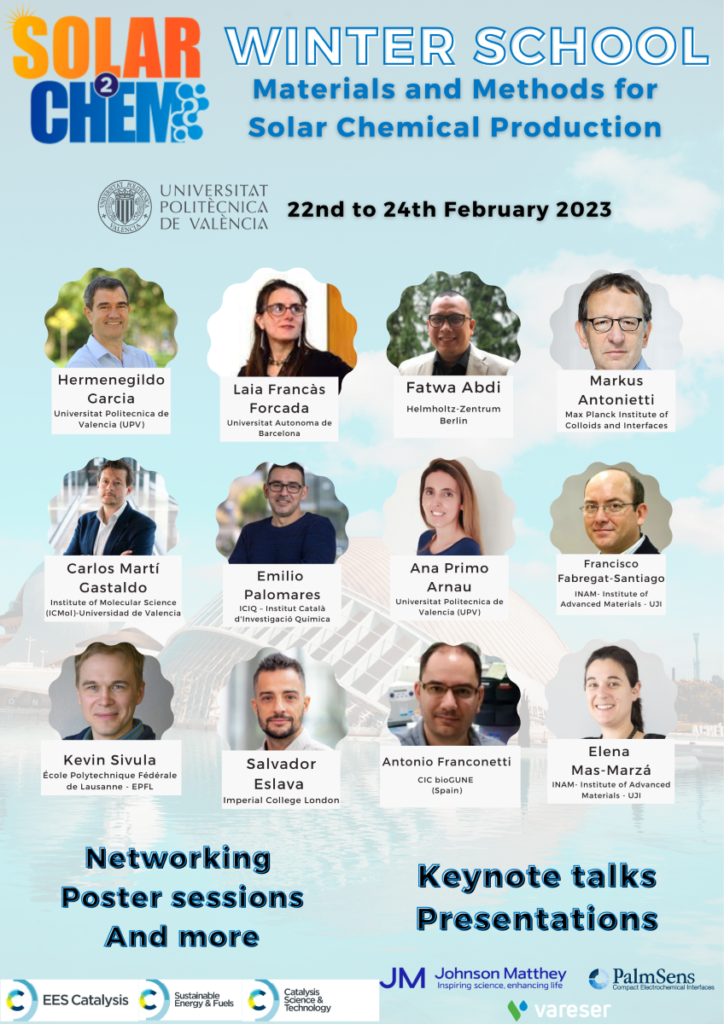
Agenda
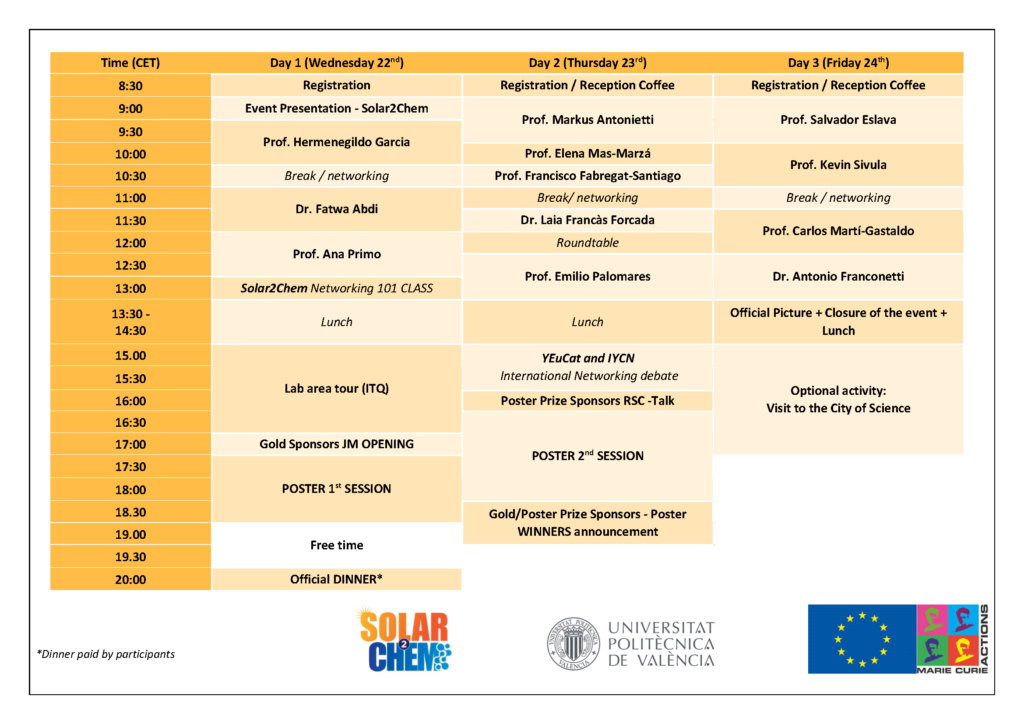
Gold Sponsor

Silver Sponsor

Bronze Sponsor
Monetary poster prizes from

Event supported by
Sponsorship Opportunities
Click on the image for more details
